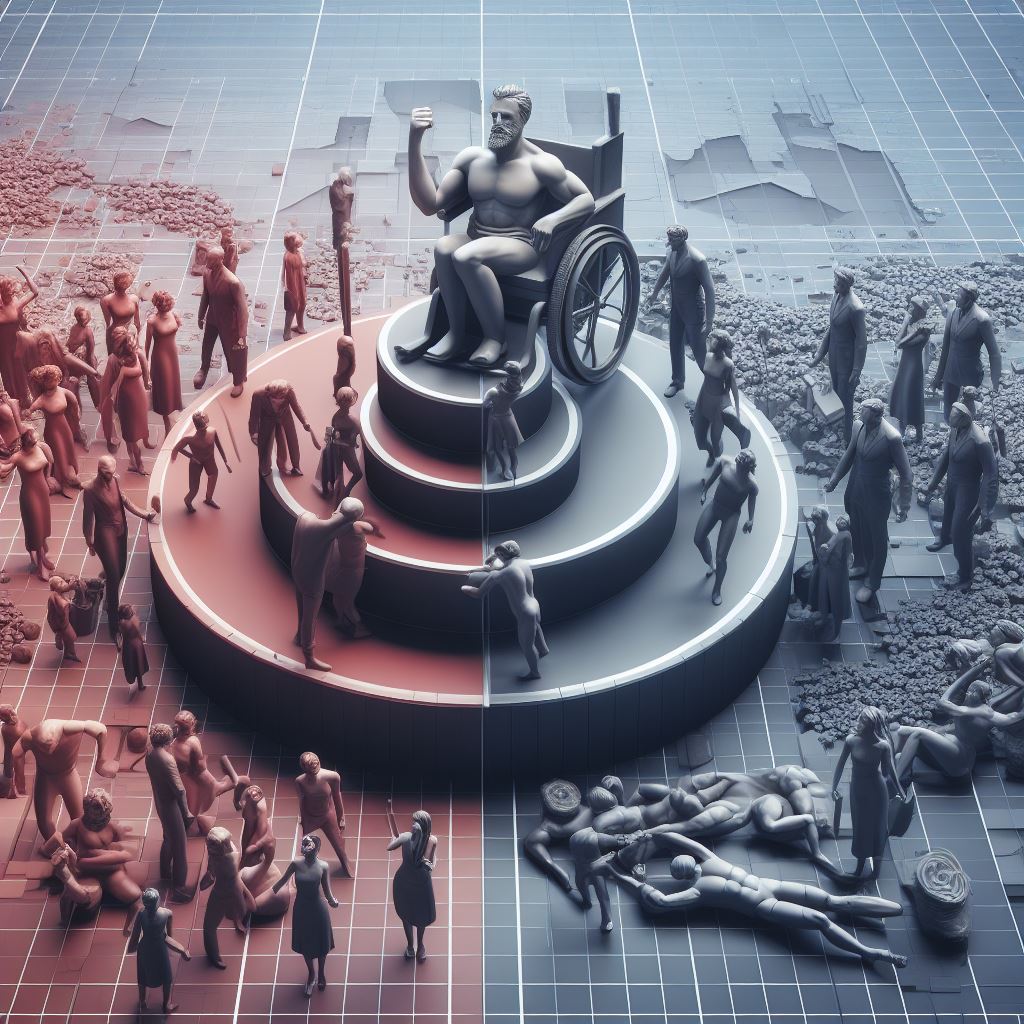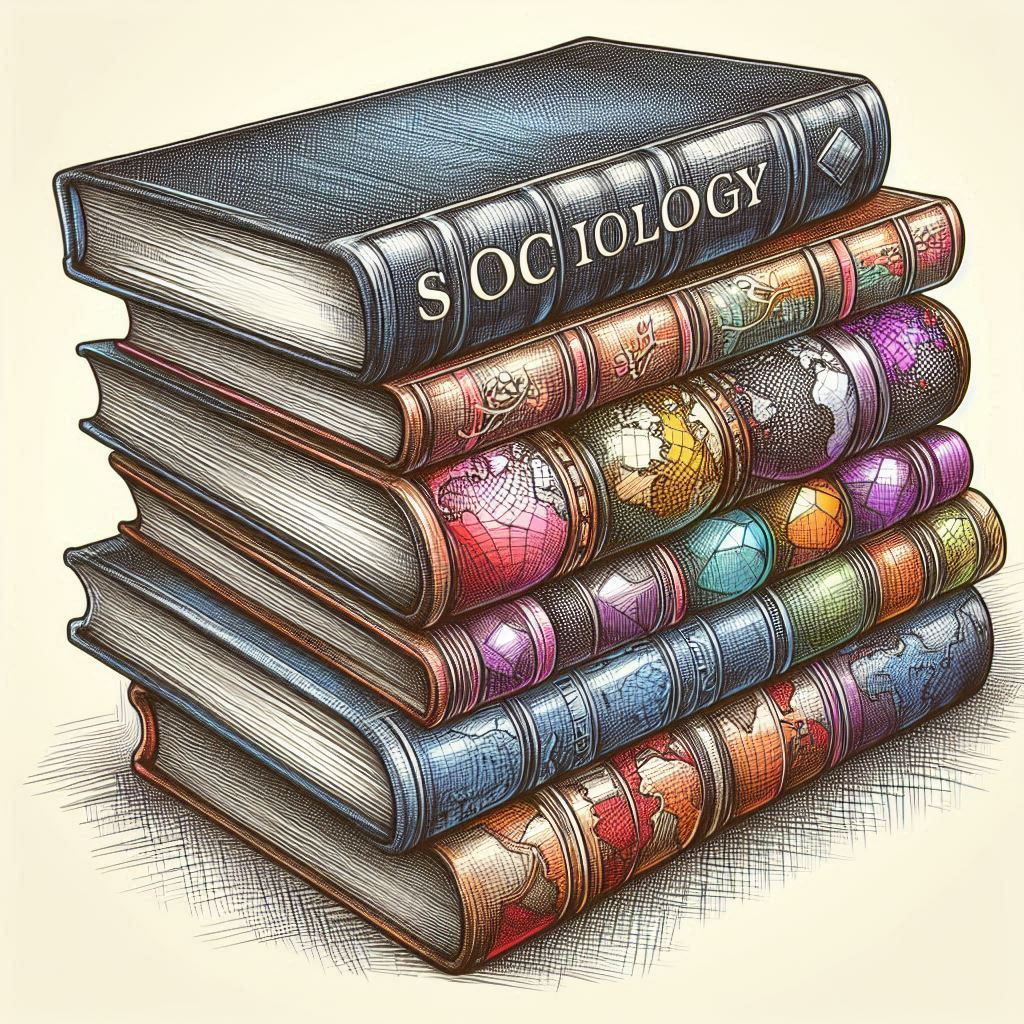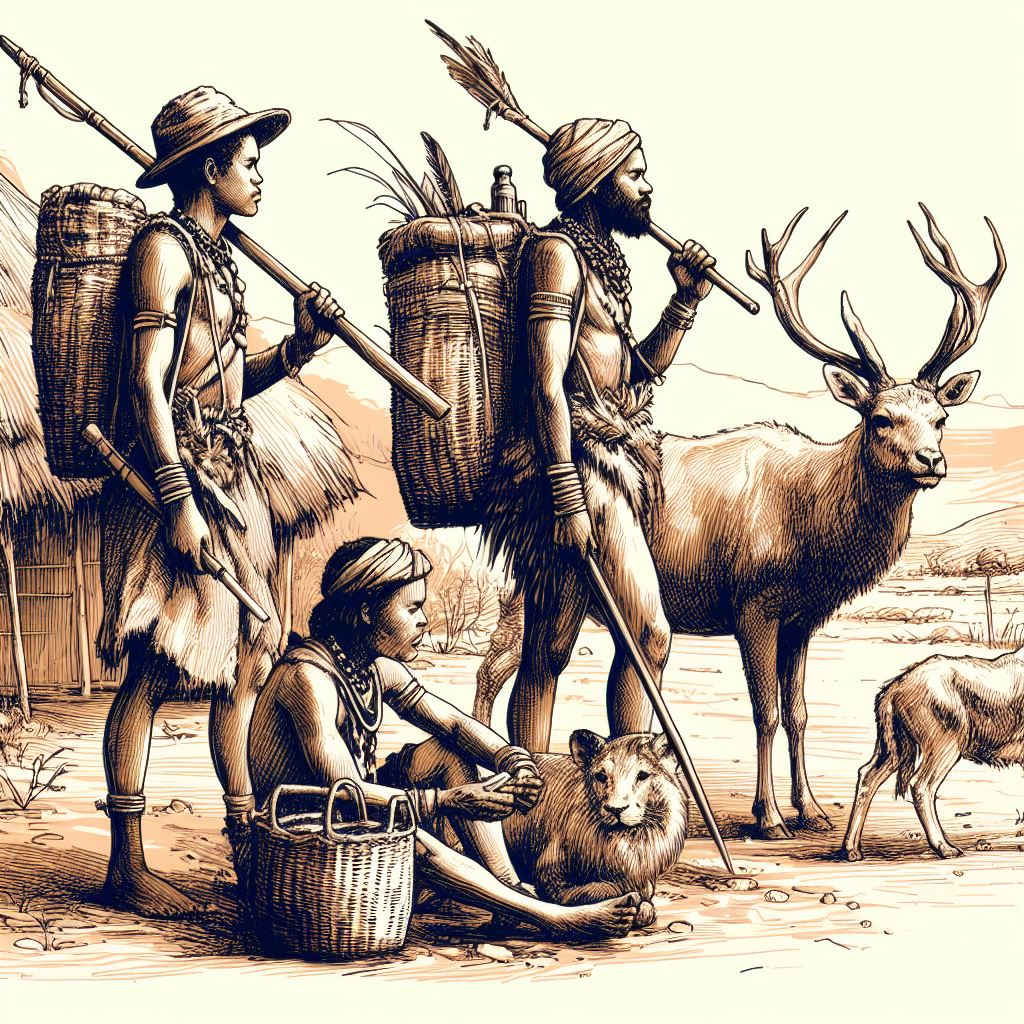Sociologists and other social theorists use the concept of social stratification to describe inequalities that exist between individuals and groups within human societies. Often, we think of stratification in terms of assets or property, but it can also occur because of other attributes, such as gender, age, religious affiliation or military rank.
Individuals and groups enjoy differential (unequal) access to rewards based on their position within the stratification scheme. Thus, stratification can most simply be defined as structured inequalities between different groups of people. It is useful to think of stratification as rather like the geological layering of rock in the earth’s surface. Societies can be seen as consisting of ‘strata’ in a hierarchy, with the more favoured at the top and the less privileged nearer the bottom.
All socially stratified systems share three basic characteristics:
- The rankings apply to social categories of people who share a common characteristic without necessarily interacting or identifying with one another. For example, women may be ranked differently from men or wealthy people differently from the poor. This does not mean that individuals from a particular category cannot change their rank; however, it does mean that the category continues to exist even if individuals move out of it and into another category.
- People’s life experiences and opportunities depend heavily on how their social category is ranked. Being male or female, black or white, upper class or working class makes a big difference in terms of your life chances – often as big a difference as personal effort or good fortune (such as winning a lottery).
- The ranks of different social categories tend to change very slowly over time. In industrialized societies, for example, only recently have women as a whole begun to achieve equality with men.
In the earliest human societies, which were based on hunting and gathering, there was very little social stratification – mainly because there was very little by way of wealth or other resources to be divided up. The development of agriculture produced considerably more wealth and, as a result, a great increase in stratification.
Social stratification in agricultural societies increasingly came to resemble a pyramid, with a large number of people at the bottom and a successively smaller number of people as you move towards the top. Today, industrial and post-industrial societies are extremely complex; their stratification is more likely to resemble a teardrop, with a large number of people in the middle and lower-middle ranks (the so-called middle class), a slightly smaller number of people at the bottom, and very few people as one moves towards the top.
Historically, four basic systems of stratification can be distinguished: slavery, caste, estates and class. These are sometimes found in conjunction with one another: slavery, for instance, existed alongside classes in ancient Greece and Rome, and in the Southern United States before the Civil War of the 1860s.
Theories of Social Stratification
Why does social stratification exist at all? Sociological theories provide several different insights into the causes and consequences of social inequality. We present three theoretical approaches structural-functional theory, social-conflict theory, and symbolic-interaction theory. We begin with the structural-functional approach, which claims that social inequality plays a vital part in the smooth operation of society. This argument was set forth more than sixty years ago by Kingsley Davis and Wilbert Moore (1945).
Structural-Functional Theory: The Davis-Moore Theory
The davis-Moore thesis states that social stratification has beneficial consequences for the operation of society. How else, ask Davis and Moore can we explain the fact that some form of social stratification has been found in every society? Davis and Moore note that modern societies have hundreds of occupational positions of varying importance.
Certain jobs—say, washing windows or answering a telephone—are fairly easy and can be performed by almost anyone. Other jobs—such as designing new generations of computers or transplanting human organs—are difficult and demand the scarce talents of people with extensive and expensive training. Therefore, Davis and Moore explain, the greater the functional importance of a position, the more rewards a society attaches to it. This strategy promotes productivity and efficiency because rewarding important work with income, prestige, power, and leisure encourages people to do these jobs and to work better, longer, and harder. In short, unequal rewards (the foundation of social stratification) benefit society as a whole.
Davis and Moore claim that any society could be egalitarian, but only to the extent that people are willing to let anyone perform any job. Equality would also demand that someone who carries out a job poorly be rewarded the same as someone who performs it well. Such a system would offer little incentive for people to try their best, thereby reducing the society’s productive efficiency.
The Davis-Moore thesis suggests the reason stratification exists; it does not state what rewards a society should give to any occupational position or how unequal the rewards should be. It merely points out that positions a society considers more important must offer enough rewards to draw talented people away from less important work.
Marx’s Theory of Class Conflict
Social-conflict analysis argues that rather than benefiting society as a whole, social stratification benefits some people and disadvantages others. This analysis draws heavily on the ideas of Karl Marx, with contributions from Max Weber. Karl Marx, explained that most people have one of two basic relationships to the means of production: They either own productive property or labor for others. Different productive roles arise from different social classes. In medieval Europe, aristocratic families, including high church officials and titled nobles, owned the land on which peasants labored as farmers. In industrial class systems, the capitalists (or the bourgeoisie) own the factories, which use the labor of workers (the proletarians).
Marx lived during the nineteenth century, a time when a small number of industrialists in the United States were amassing great fortunes. The business tycoons who led the country’s move into the industrial age included Andrew Carnegie (steel), J. P. Morgan (finance and steel), John D. Rockefeller (oil), and John Jacob Astor (real estate; Astor was the richest passenger on the Titanic and one of the few very rich passengers to drown when the ship sank).
All of them lived in fabulous mansions staffed by dozens of servants. Even by today’s standards, their incomes were staggering. For example, Carnegie earned about $20 million a year in 1900 (more than $570 million in today’s dollars), when the average worker earned roughly $500 a year (Baltzell, 1964; Williamson, 2015).
Marx explained that capitalist society reproduces the class structure in each new generation. This happens as families gain wealth and pass it down from generation to generation. But, he predicted, oppression and misery would eventually drive the working majority to come together to overthrow capitalism in favor of a socialist system that would put an end to class differences.
Max Weber: Class, Status, and Power:
Max Weber, agreed with Karl Marx that social stratification causes social conflict, but he viewed Marx’s economics-based model as simplistic. Instead, he claimed that social stratification involves three distinct dimensions of inequality.
The first dimension is economic inequality—the issue so important to Marx—which Weber termed class position. Weber did not think of classes as well-defined categories but as a continuum ranging from high to low. Weber’s second dimension is status, or social prestige, and the third is power. Weber’s Socioeconomic Status Hierarchy Marx viewed social prestige and power as simple reflections of economic position and did not treat them as distinct dimensions of inequality. But Weber noted that status consistency in modern societies is often quite low: For instance, a local official might exercise great power yet have little wealth or social prestige. Weber, then, portrays social stratification in industrial societies as a multidimensional ranking rather than a hierarchy of clearly defined classes. In line with Weber’s thinking, sociologists use the term socioeconomic status (SeS) to refer to a composite ranking based on various dimensions of social inequality. Inequality in History Weber claimed that each of his three dimensions of social inequality stands out at different points in the evolution of human societies. Status or social prestige is the main difference in agrarian societies, taking the form of honor. Members of these societies (whether nobles or servants) gain status by conforming to cultural norms that apply to their particular rank.
Industrialization and the development of capitalism eliminate traditional rankings based on birth but create striking financial inequality. Thus in an industrial society, the crucial difference between people is the economic dimension of class. Over time, industrial societies witness the growth of a bureaucratic state. Bigger government and the spread of all sorts of other organizations make power more important in the stratification system. Especially in socialist societies, where government regulates many aspects of life, highranking officials become the new ruling elite.

This historical analysis points to a final difference between Weber and Marx. Marx thought societies could eliminate social stratification by abolishing the private ownership of productive property that is the basis of capitalism.
Weber doubted that overthrowing capitalism would significantly lessen social stratification. It might reduce economic differences, he reasoned, but socialism would increase inequality by expanding government and concentrating power in the hands of a political elite. Popular uprisings against socialist bureaucracies in Eastern Europe and the former Soviet Union show that discontent can be generated by socialist political elites, a fact that supports Weber’s position.
References
- Haralambos & Holborn, Sociology: Themes and Perspectives
- Giddens & Sutton, Sociology
- Explore more on Basic Concepts



Very Well Explained. Thank for sharing